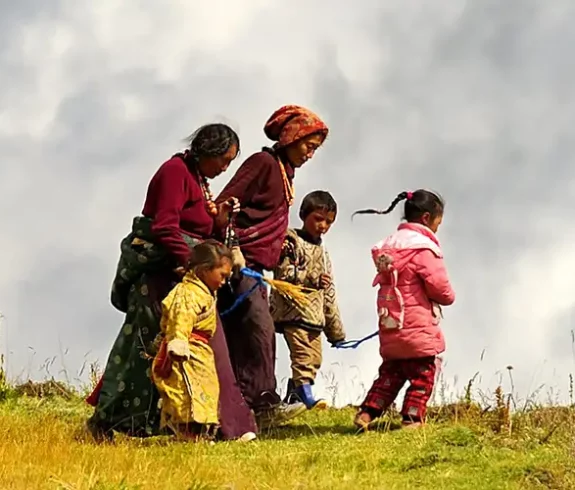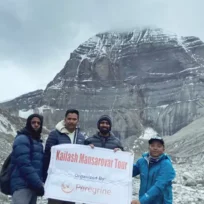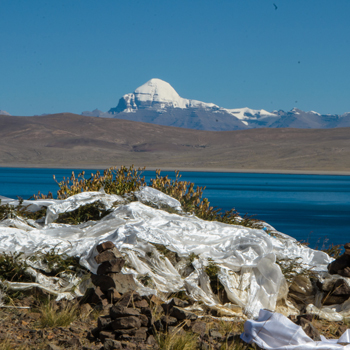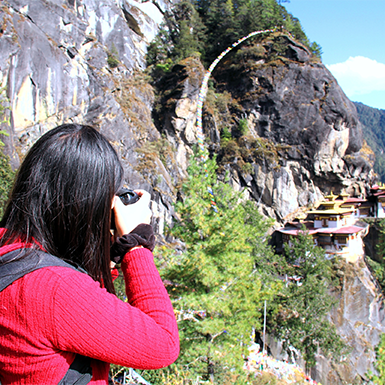For centuries, the majestic Himalayas have resonated with the sounds of Tibetan meditation, echoing this ancient practice throughout the region. Tibetan meditation is a relaxation method, a cornerstone of Tibetan Buddhist culture, and a path to profound spiritual awakening.
Seeds of Tranquility: The Spiritual Significance of Tibetan Meditation
In Tibetan Buddhism, the mind is considered the root of suffering. Through meditation, practitioners cultivate inner peace and wisdom to achieve liberation from this cycle. Designers have crafted Tibetan meditation techniques to:
- Sharpen focus: Meditation enhances concentration and mental clarity by calming the mind’s constant chatter.
- Cultivate compassion: Loving kindness and altruism are core aspects of Tibetan Buddhism. Meditation enables practitioners to establish meaningful connections with others by cultivating these attributes.
- Gain self-awareness: Observing thoughts and emotions without judgment fosters a deeper understanding of oneself.
Sanctuaries of Serenity: Tibetan Meditation Retreats
It sits among mountain landscapes that take one’s breath away. Tibet Meditation retreats provide a distinctive chance to get involved in this transformative practice. These sanctuaries offer a structured environment with the following:
- Experienced teachers: Learn from Tibetan monks and teachers who dedicated their lives to mastering meditation.
- Structured practice sessions: Daily meditation sessions allow focused practice and a chance to refine your technique.
- Peaceful atmosphere: Free from distractions, retreats create a conducive space for introspection and inner exploration.
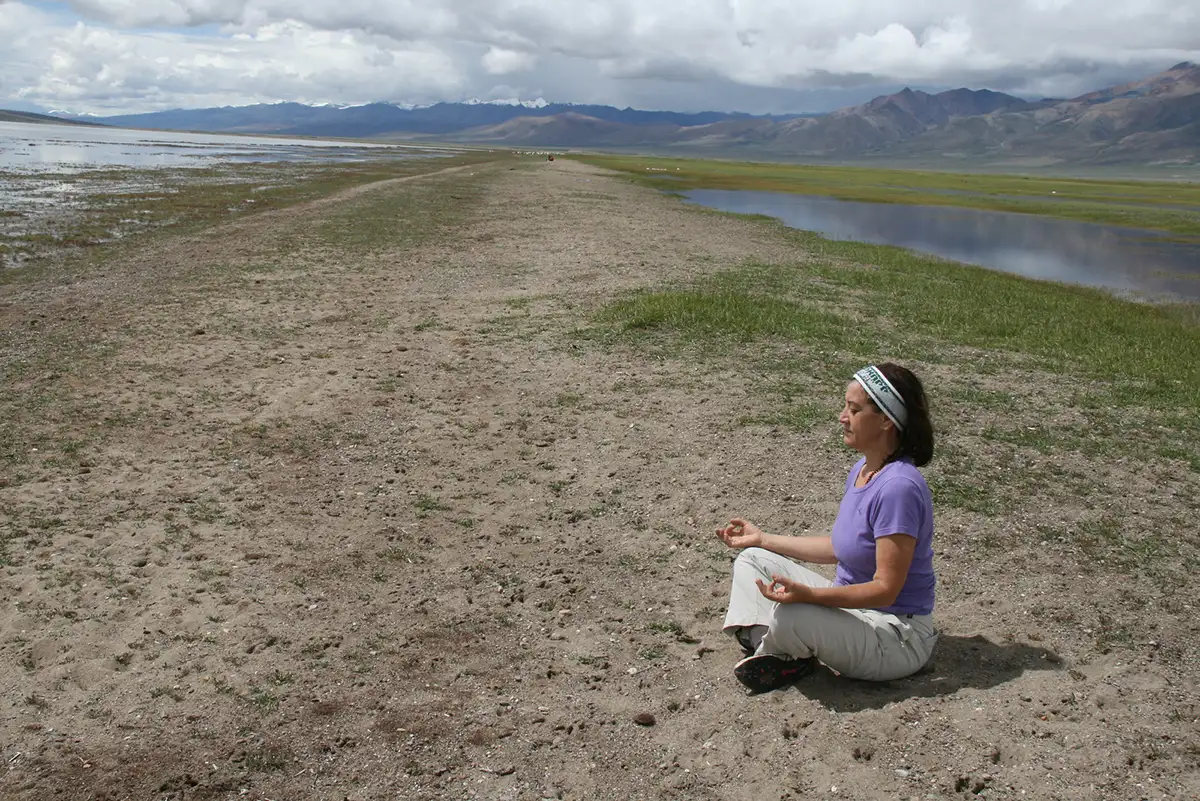
The Enduring Legacy: How Meditation Shapes Tibetan Culture
Tibetan meditation has been the bedrock of Tibetan culture for millennia, shaping its history, social fabric, and spiritual identity. This profound practice stretches back to the introduction of Buddhism in the 7th century AD.
Rooted in Ancient Wisdom
The arrival of Buddhism in Tibet wasn’t just a religious shift but a cultural transformation. Meditation techniques, originally from India, became central to Tibetan Buddhist practice. Tibetan masters meticulously preserved and adapted these techniques, creating unique forms like Vajrayana meditation.
A-Pillar of Daily Life
Tibetan meditation extends beyond the walls of monasteries and temples. It’s woven into the daily lives of Tibetans. Here’s how:
- Morning Rituals: Many Tibetans meditate, fostering a sense of calm and focus before daily activities.
- Mantra Recitation: Chanting mantras, often accompanied by Tibetan meditation bowls, is a widespread practice for meditation and purification.
- Monastery Life: Monks and nuns dedicate much of their days to intensive meditation, deepening their spiritual understanding.
Integration with Spiritual Practice
Tibetan meditation is more than just stress relief; it’s a tool for enlightenment. Here’s how it functions within the spiritual framework:
- Overcoming Obstacles: Meditation helps practitioners overcome negative emotions and mental distractions, clearing the path to spiritual progress.
- Cultivating Compassion: Loving-kindness meditation, a core technique, fosters compassion for all beings, a fundamental tenet of Tibetan Buddhism.
- Attaining Liberation: Practitioners of focused meditation strive to achieve deep insights into the nature of reality, ultimately aiming for liberation from suffering.
A Look at Tibetan Meditation Practices
Tibet Meditation offers a rich tapestry of techniques to cultivate inner peace, wisdom, and spiritual awakening. Let’s explore some of the most common practices:
Sharpening Insight: Vipassana Meditation
Vipassana, meaning “insight meditation” in Pali, is a core technique across Buddhist traditions, including Tibetan Buddhism. During Vipassana meditation, participants must examine the fleeting moments exhibited by their thoughts, emotions, and physical sensations. This observation fosters detachment and a deeper understanding of reality.
Reaching the Great Perfection: Dzogchen
Dzogchen, meaning “Great Perfection,” is an advanced meditation practice unique to Tibetan Buddhism. It emphasizes recognizing the mind’s inherent awakened nature. Dzogchen practitioners cultivate a relaxed awareness, directly allowing them to experience their true nature.
Beyond the Breath: Additional Techniques
While breath awareness is a standard foundation, Tibetan meditation incorporates other elements:
- Mantras: Chanting sacred syllables or phrases (mantras) focuses the mind and promotes deeper concentration. Mantras are often used with Tibetan meditation bowls, creating a resonant soundscape.
- Mudras: Practitioners use specific hand gestures (mudras) to channel energy and enhance the focus of meditation.
- Visualization: Visualizing deities, symbols, or mandalas can aid concentration and cultivate specific qualities like compassion or wisdom.
Exploring Tibetan Meditation Centers and Retreats
Tibetan meditation centers offer a transformative experience for those seeking inner peace and spiritual growth. These havens, nestled amidst breathtaking landscapes, provide a supportive environment to learn and practice under the guidance of experienced teachers. Let’s explore some renowned Tibetan meditation centers and retreats:
1. Drak Yerpa Retreat: Located near Lhasa, Drak Yerpa boasts a 1500-year history. This retreat center features numerous caves used for meditation throughout the centuries, including those frequented by historical figures like King Songtsen Gampo and Padmasambhava. Drak Yerpa offers retreats focused on traditional Tibetan practices from a week to a month.
2. Pabongka Hermitage: Situated in a remote region of Eastern Tibet, Pabongka Hermitage is known for its rigorous meditation programs. This retreat emphasizes techniques like chod (cutting through ego) and Dzogchen (great completeness), which are suitable for experienced practitioners. Retreats here typically last for several months.
3. Namtso Lake: This sacred lake, known for its turquoise waters, is a favored spot for meditation retreats focusing on connecting with nature and cultivating compassion. Many centers around the lake offer shorter retreats (3-7 days) that incorporate mindfulness meditation practices alongside stunning lakefront scenery.
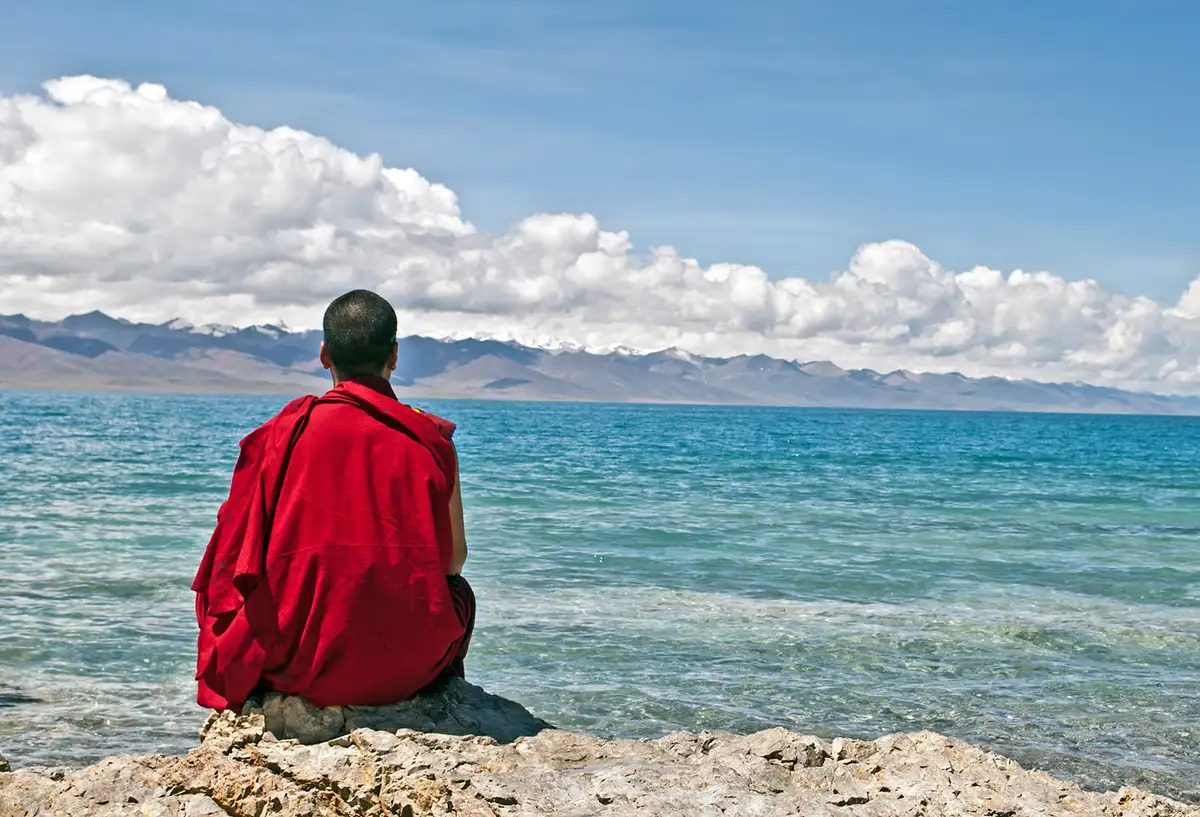
4. Samye Monastery: Tibet’s first Buddhist monastery, Samye, offers a unique opportunity to practice amid historical significance. Retreats here often focus on foundational Tibetan Buddhist teachings and meditation techniques, with durations ranging from a week to a month.
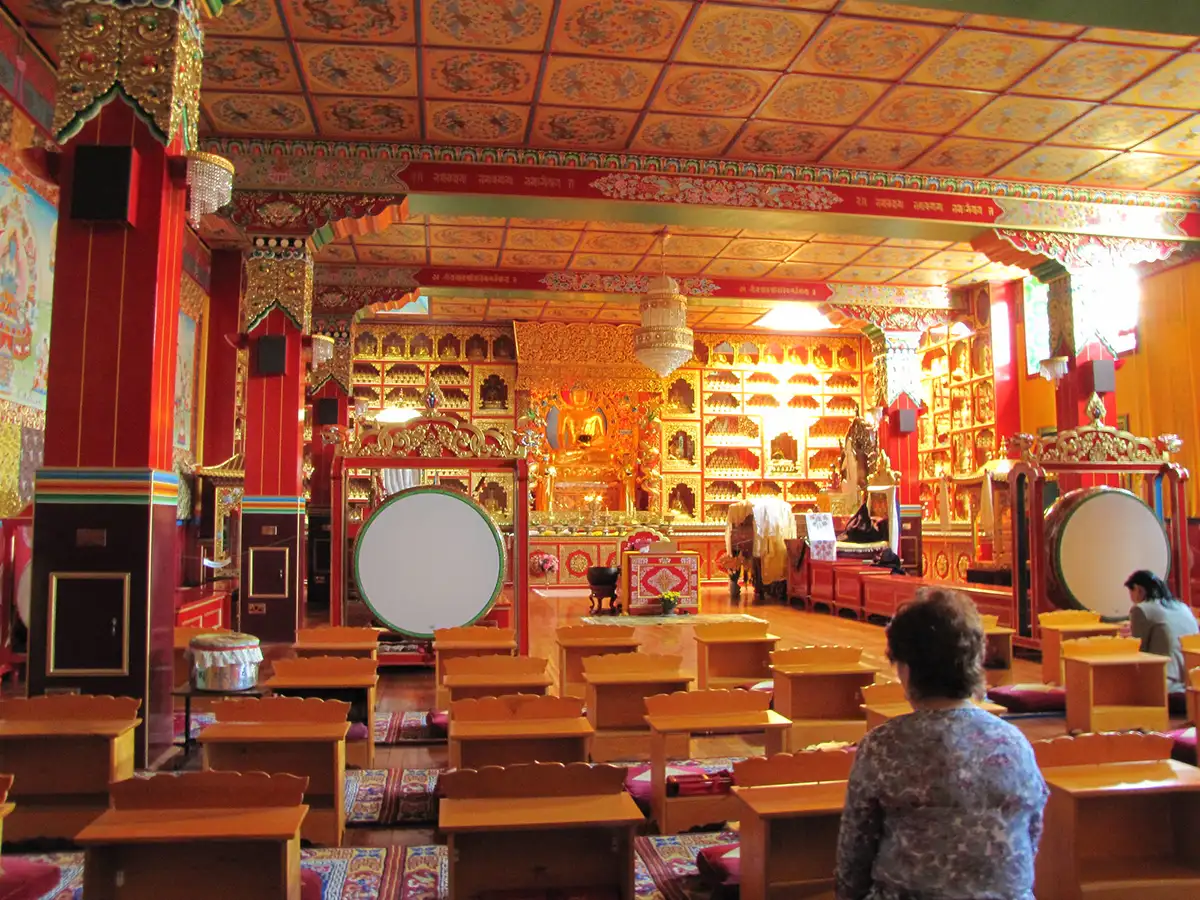
5. Chim-puk Valley: This secluded valley, renowned for its natural beauty, provides a haven for solitary retreats. Here, practitioners can deepen their meditation practice in a peaceful environment with minimal distractions. Retreats in Chim-puk Valley are typically self-directed and can last for weeks or months.
6. Tashilhunpo Monastery: Located in Shigatse, Tashilhunpo Monastery offers retreats focused on the Gelugpa school of Tibetan Buddhism. These retreats often incorporate meditation teachings alongside Tara puja (worship) ceremonies, and their durations range from a week to a month.
7. Sakya Monastery: The seat of the Sakya lineage of Tibetan Buddhism, Sakya Monastery provides retreats centered on the unique practices of this tradition. These retreats may explore esoteric meditation techniques alongside philosophical teachings, with durations lasting a week or more.
8. Rongbuk Monastery: Located at the foot of Mount Everest, Rongbuk Monastery offers a truly awe-inspiring setting for meditation. Retreats here focus on cultivating inner peace and strength, surrounded by majestic Himalayan scenery. Typical retreat lengths range from a week to a month.
9. Mount Kailash and Lake Manasarovar: This sacred pilgrimage site offers a unique opportunity to combine meditation with circumambulation (walking around a holy site) practices. Retreats here, lasting from a week to a month, focus on spiritual purification and connection with the sacred landscape.
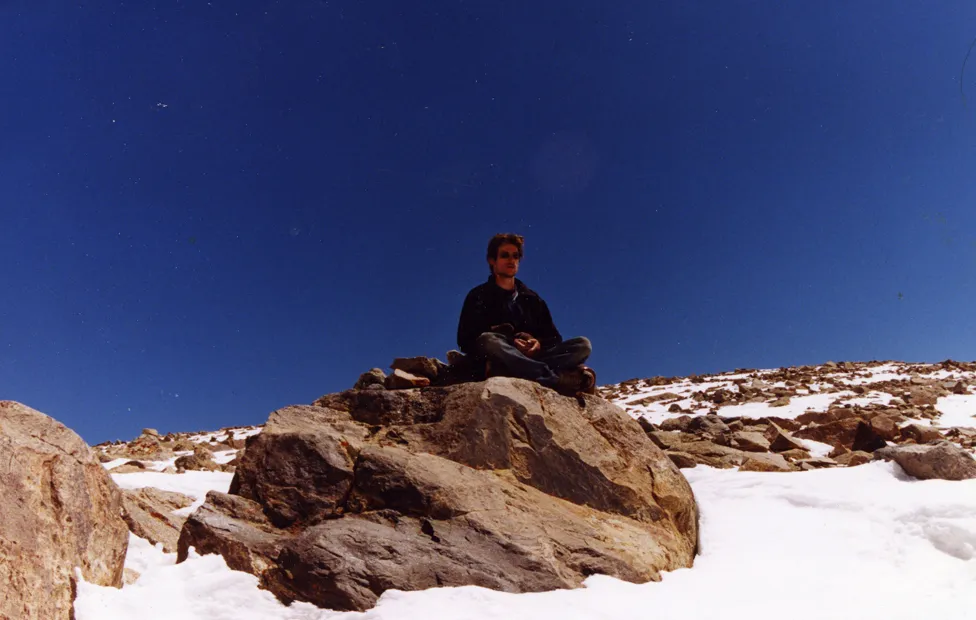
10. Pangong Tso: This stunning, high-altitude lake is a popular destination for meditation retreats focused on cultivating inner clarity and serenity. Many centers around the lake offer shorter retreats (3-7 days) that incorporate mindfulness meditation practices in a breathtaking natural environment.
The Resonant Path: Exploring Tibetan Meditation Bowls
Tibetan meditation bowls, often called singing bowls, are more than just beautiful instruments. They are integral to Tibetan meditation practices, used to induce relaxation, enhance focus, and deepen the meditative state.
A Song for the Soul: How Meditation Bowls Work
Tibetan meditation bowls, usually made from metal alloys, produce rich, low sounds when struck or rubbed. These vibrations travel through your whole being, giving you peace and making it easier for you to think better.
Here’s how practitioners use meditation bowls in Tibetan practices:
- Focusing the Mind: The resonant sound of the bowl helps practitioners anchor their attention to the present moment, reducing distractions and promoting mindfulness.
- Deepening Relaxation: The vibrations can induce deep relaxation, similar to the theta brainwave state associated with meditation.
- Clearing Energy Blockages: Tibetan tradition believes the bowls can help clear stagnant energy within the body, promoting well-being.
Beyond Meditation: The Versatility of Bowls
The benefits of Tibetan meditation bowls extend beyond traditional meditation practices. People are increasingly using them in:
- Sound Healing: The soundscapes created by the bowls can induce relaxation and relieve stress, making them valuable tools for sound therapy sessions.
- Mindfulness Practices: The calming effect of the bowls can enhance mindfulness exercises like mindful breathing or body scans.
- Yoga and Movement: The bowls can be incorporated into yoga or movement practices to create a more meditative and reflective experience.

Finding Your Harmony: Choosing and Using a Bowl
Tibetan meditation bowls come in various sizes, each producing a unique tone. Beginners can start with a smaller bowl, while experienced practitioners may prefer the deeper tones of larger bowls. Here are some tips for using your meditation bowl:
- Find a quiet space: Create a calm place with no distractions.
- Keep the cup attractive: Hold it in your non-dominant hand or place it on a shirt.
- Strike or rub the rim: Gently strike the bowl’s rim with a mallet or rub it in a circular motion to create a sustained sound.
- Please focus on the sound: Allow it to wash over you, using it as an anchor for your attention during meditation.
Finding Your Sanctuary: Choosing the Perfect Tibetan Meditation Retreat
Tibetan meditation retreats offer a transformative opportunity to deepen your practice, cultivate inner peace, and connect with a rich spiritual tradition. But with numerous retreats available, selecting the right one can feel overwhelming. Here’s a guide to help you find the perfect Tibet Meditation retreat that aligns with your goals and preferences.
Know Your Why: Setting Your Meditation Goals
Before diving into retreat options, take time to reflect on your aspirations. Are you seeking:
- An Introduction to Tibetan Meditation: Look for retreats offering beginner-friendly instruction on core techniques like breathwork and mantras.
- Deepening Your Practice: Consider retreats led by experienced Tibetan teachers, focusing on specific techniques like Dzogchen or Vipassana meditation.
- Spiritual Exploration: Choose retreats that incorporate teachings on Tibetan Buddhist philosophy alongside meditation practice.
Experience Matters: Matching Your Skill Level
Tibet Meditation retreats cater to various experience levels. Be honest about your practice:
- Beginners: Opt for retreats with a strong emphasis on foundational techniques and a supportive environment.
- Intermediate Practitioners: Explore retreats with opportunities to refine your technique and learn more advanced practices.
- Experienced Meditators: Seek out intensive retreats led by renowned teachers, offering challenges and deeper exploration.
Finding the Right Fit: Location, Duration & Accommodations
The retreat’s setting, duration, and accommodations significantly impact your experience. Consider these factors:
- Location: To truly immerse yourself in Tibetan life, choose from secluded mountain retreats or retreats closer to cultural centers.
- Duration: Weekend retreats offer a brief introduction, while more extended programs allow for deeper exploration. Consider your schedule and commitment level.
- Accommodation: Tibet Meditation retreats range from basic guesthouses to monasteries. Choose an environment that fosters peace and supports your practice.
Exploring Traditions: Types of Tibetan Meditation
Tibetan Buddhism encompasses various schools, each with its meditation practices. Here are some common meditation styles offered in retreats:
- Vipassana Meditation: This insight meditation technique focuses on observing the impermanent nature of thoughts and emotions.
- Dzogchen Meditation: This advanced practice emphasizes recognizing the inherently awakened nature of the mind.
- Metta Meditation: This loving-kindness meditation cultivates compassion for oneself and all beings.
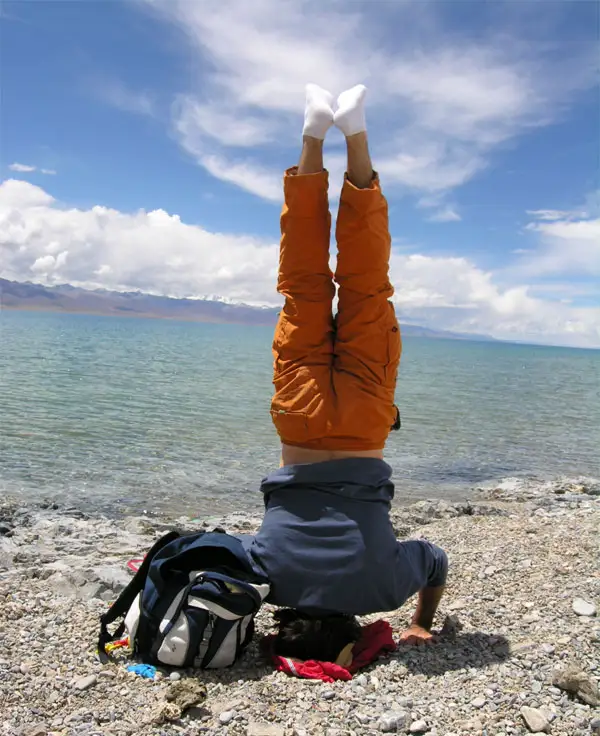
Tibet Spiritual Journeys: Planning Your Tibetan Meditation Retreat
Once you have a clearer idea of your goals and preferences, research specific retreats. Read reviews and inquire about the daily schedule and teacher qualifications. Consider attending introductory talks or workshops led by retreat centers to get a feel for their teaching style.
Preparing for a Meditation Retreat in Tibet
The majestic Himalayas beckon, promising a profound trip of inner peace through Tibetan meditation. But before you begin this transformative experience, thorough preparation is critical. Here’s a guide to ensure a smooth and enriching Tibet Meditation retreat:
Planning Your Passage: Travel Essentials
- Visas and Permits: A Chinese visa is mandatory for entry into Tibet. You may need additional permits for specific regions. Research visa requirements well in advance and consult with your nearest Chinese embassy or consulate.
- Booking Flights and Accommodation: When traveling during peak season, it is advisable to book your flight and retreat accommodation. Another important consideration is that you should be insured.
- Researching Transportation: Depending on the retreat location, you may need to arrange internal flights or train trips within China to reach your destination.
Packing for Peace: What to Bring
- Comfortable Clothing: Pack loose-fitting, breathable clothing suitable for layering due to variable temperatures in Tibet.
- Warm Layers: Even in summer, evenings can be chilly. Pack a warm jacket, hat, and gloves.
- Meditation Essentials: Bring a comfortable meditation cushion if you have one, or inquire if the retreat provides them. A light shawl can also be helpful.
- Sun Protection: Tibet’s altitude makes sunlight more intense. Bring a hat, sunglasses, and high-SPF sunscreen.
- Basic First-Aid Kit: Pack essential medications, such as pain relievers, anti-diarrheal medication, and blister bandages, for minor ailments.
Acclimatization Essentials: Conquering the High Altitudes
Many Tibetan meditation retreats sit at high altitudes. Here’s how to adjust:
- Gradual Ascent: Plan your trip to allow for a gradual ascent to higher elevations. This will help your body adjust to the thinner air.
- Hydration is Key: Drink plenty of water before, during, and after your trip to combat altitude sickness symptoms such as headaches and dizziness.
- Listen to Your Body: Take it slow and avoid strenuous activity at high altitudes during the first few days.
Embracing the Culture: Respectful Practices
Tibet is a profoundly spiritual region. Here are some practices to show respect:
- Dress modestly: Avoid overly revealing clothing when visiting monasteries or temples.
- Mindful Photography: Only take pictures of people or places of worship after first getting permission.
- Respectful Conduct: Be mindful of noise levels and refrain from disrespectful behavior in sacred spaces.
Ethical and Cultural Considerations for Tibet Meditation Retreat
The Himalayas beckon with the promise of profound inner peace through Tibetan meditation. However, a genuinely enriching retreat extends beyond personal growth; it requires respect for the local culture and environment. Here’s how to ensure your Tibetan meditation retreat is both ethically sound and culturally sensitive:
Respecting the Sacred: Mindfulness in Monasteries and Temples
- Dress Modestly: Avoid overly revealing clothing when visiting monasteries or temples. Opt for loose-fitting, respectful attire that covers shoulders and knees.
- Mindful Photography: It is essential to ask before you take a photograph of any person or place of religious importance: refrain from using camera flashes indoors at such locations.
- Lower Your Voice: Maintain a peaceful and respectful demeanor. Refrain from loud conversations or disruptive behavior in sacred spaces.
Treading Lightly: Sustainable Practices for Eco-Conscious Travelers
- Responsible Waste Management: Pack reusable water bottles and shopping bags to reduce waste. Dispose of any waste generated during your vacation correctly.
- Supporting Local Communities: Whenever possible, choose locally owned guesthouses and shops. Injecting revenue directly into the community supports traditional livelihoods and benefits the local economy.
- Respecting the Environment: Minimize your environmental footprint. Be mindful of water usage and avoid littering in natural areas.
Building Bridges: Connecting with the Local People
- Learn a Few Basic Tibetan Phrases: A few key phrases, like “hello” and “thank you,” in Tibetan, go a long way toward showing respect and appreciation to the local people.
- Embrace Local Cuisine: Sample traditional Tibetan dishes with an open mind. Immersing yourself in the culture and supporting local food producers is a fantastic way to experience the region.
- Open Communication: Be mindful of cultural differences in communication styles. Speak slowly and clearly, and avoid raising your voice or making gestures that others may interpret as rude.
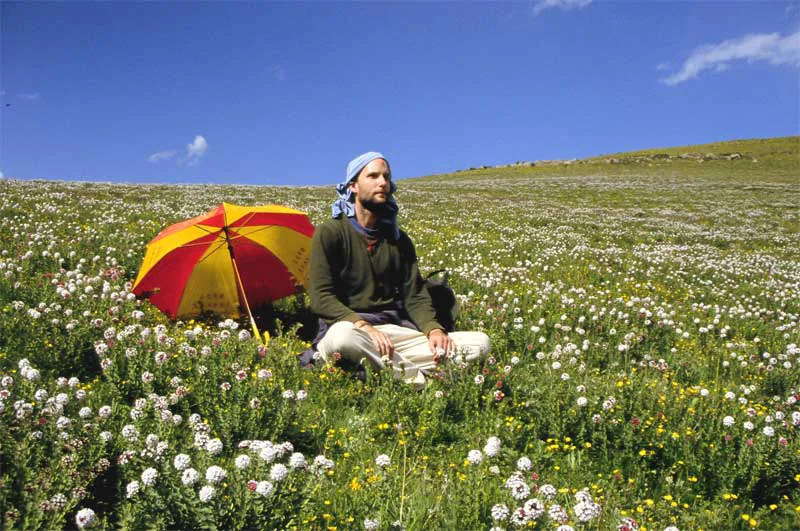
Ethical Considerations for Retreat Participation
- Research the Retreat Center: Choose a retreat center that operates ethically and respects the local community. Look for centers that support fair wages for staff and engage in sustainable practices.
- Responsible Pricing: Be wary of retreats offering unrealistically low prices. These may exploit local workers or prioritize profit over ethical treatment.
- Cultural Appropriation: Avoid engaging in practices that might disrespect or appropriate Tibetan traditions. Focus on learning and participating with an open mind and a respectful heart.
The Transformative Benefits of Tibetan Meditation
The echoing chants and resonating Tibetan meditation bowls have beckoned spiritual seekers to the majestic Himalayas for centuries. However, the benefits of Tibetan meditation extend far beyond breathtaking landscapes. This ancient practice provides a route to inner peace, emotional well-being, and improvements in physical health.
Cultivating Inner Harmony: The Spiritual Benefits
- Sharpened Focus: Tibetan meditation techniques, like focusing on the breath, enhance concentration and mental clarity, aiding mindfulness in daily life.
- Reduced Stress and Anxiety: Through deep relaxation and self-awareness practices, Tibetan meditation helps alleviate stress and anxiety, fostering inner peace.
- Compassion and Connection: Loving-kindness meditation, a core practice, cultivates compassion for oneself and all beings, promoting stronger social connections.
- Spiritual Awakening: For some, Tibet Meditation becomes a path to spiritual awakening, offering a deeper understanding of the nature of reality.
Emotional Transformation: Finding Inner Peace
- Increased Self-Awareness: Tibet Meditation fosters self-awareness by observing thoughts and emotions without judgment, allowing practitioners to manage emotions more effectively.
- Improved Emotional Regulation: Through techniques like mindfulness, practitioners learn to respond to challenging situations more calmly and clearly.
- Enhanced Resilience: Tibet Meditation practices can build emotional resilience, helping individuals navigate life’s difficulties more easily.
Beyond the Mind: Physical Health Benefits
- Reduced Blood Pressure: Studies suggest meditation practices, such as those found in Tibetan traditions, can lower blood pressure, promoting cardiovascular health.
- Improved Sleep Quality: Deep relaxation techniques improve sleep and increase energy and focus during the day.
- Pain Management: Meditation can help manage chronic pain by reducing pain and increasing coping mechanisms.
Unveiling Tranquility: The Final Call to the Himalayas
The call of the Himalayas transcends breathtaking landscapes; it beckons with the promise of inner peace and spiritual transformation. Tibetan meditation retreats offer a unique opportunity to delve into this ancient practice, fostering emotional well-being, mental clarity, and physical health improvements.
From cultivating inner harmony through practices like mindfulness and breathwork to fostering compassion and emotional resilience, Tibetan meditation equips you with tools to navigate daily life with greater peace and purpose.
Choosing the Right Path: Considerations for Your Retreat
When selecting a Tibetan meditation retreat, consider your personal goals and the impact on the local community. Opt for retreats that prioritize ethical practices, fair treatment of staff, and respect for Tibetan culture and traditions.
An extraordinary Tibet Meditation retreat transforms your personality, establishing fresh insights into the self and deeper connections with your surroundings. It is important to remember that authentic travel enriches the experience through cultural awareness and responsible acts towards the environment.
